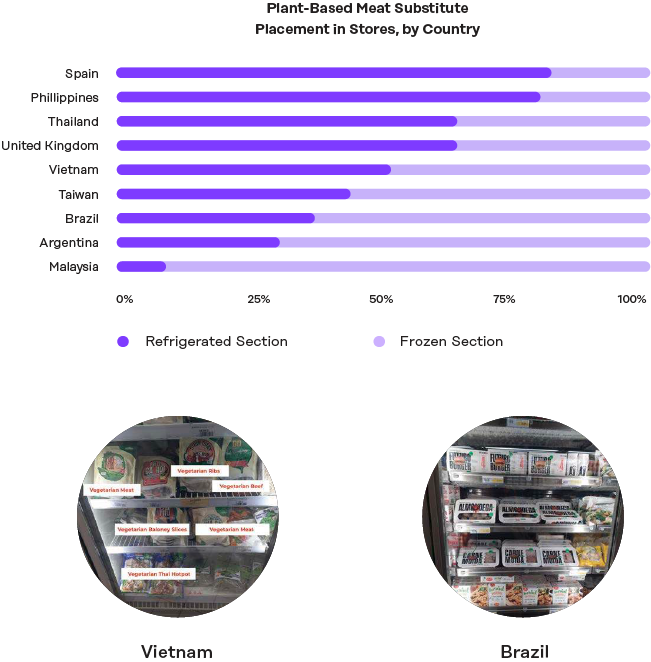Challenge
A leading plant-based meat brand in the US needed to quickly create a short list of global markets to consider for expansion. They wanted to identify countries with product offerings most similar to the brand’s existing portfolio and realized that acquiring sales data from multiple countries was more time-consuming than they had hoped — and exorbitantly expensive.
Solution
Premise enlisted a segment of its Contributor network in countries across Europe, South America, and Southeast Asia to capture observations of the placement and variety of plant-based meat alternatives in stores. Premise leveraged their Global Operations Consultants to translate tasks linguistically and culturally to each region.
Contributors were asked the following:
- Is the meat substitute section refrigerated, frozen, or both?
- Which brands are most prominent in each store?
- Which product variants were available in each store?
Within five days, Premise sourced 92 responses from nine countries and delivered a real-time data dashboard that included the photos and observations captured by the Contributors.
Findings
Premise found a surprising degree of product placement variance in stores across countries. Given that the customer’s products are typically stocked in refrigerated sections in its home market, the most comparable markets for the brand to enter were Spain, the Philippines, Thailand, and the United Kingdom.
The meat substitute products available varied dramatically by country. The ground meat substitute entry point that defines the US market is not as common as other plantbased meat offerings in most other countries. In Southeast Asia, there was a clear preference for ready-to-eat meal solutions, such as vegetarian ribs in Vietnam.
In Europe, diverse product assortments included plant-based meat ingredients as well as ready-to-eat foods, while South American stores mainly stocked pre-formed ingredients such as burger patties and meatballs. Argentina, Brazil, Spain, and the United Kingdom seemed to be the most complementary, in terms of offerings currently available, for the customer.

Implications
Equipped with this analysis, the customer was able to:
- Quickly understand the expansion potential in many global markets, allowing them to identify a narrow set of countries for further market analysis.
- Educate their product innovation team on the wide variety of meat substitutes available globally, enabling them to ideate new and culturally diverse product variants for opportunities in the US and foreign markets.